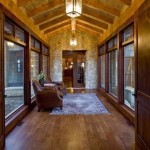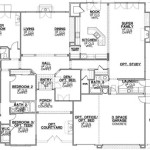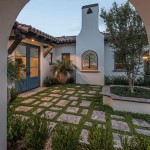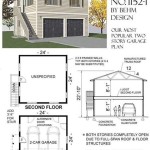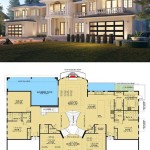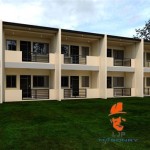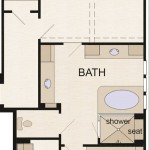Traditional One-Story House Plans: A Timeless Appeal
Traditional one-story house plans hold a significant place in architectural history and continue to be a popular choice for homeowners seeking comfort, accessibility, and a connection to established design principles. These designs, rooted in various cultural and historical influences, offer a blend of functionality, aesthetic appeal, and often, a sense of nostalgia. This article explores the characteristics, advantages, considerations, and variations of traditional one-story house plans, providing a comprehensive overview for those contemplating this enduring architectural style.
The term "traditional" encompasses a broad spectrum of architectural styles, borrowing elements from colonial, craftsman, ranch, and other historically significant designs. These plans often incorporate features like gabled roofs, symmetrical facades, covered porches, and strategically placed windows to maximize natural light. Material choices typically lean towards natural elements such as wood, brick, and stone, further contributing to their classic and enduring aesthetic. The emphasis is placed on creating a warm, inviting, and functional living space that prioritizes comfort and ease of movement.
Advantages of One-Story Living
One of the primary benefits of a single-story house plan is its inherent accessibility. The absence of stairs makes it an ideal choice for individuals with mobility concerns, families with young children, and those planning for long-term aging in place. This accessibility extends beyond physical mobility, fostering a sense of open communication and connection within the household, as all living spaces are on the same level.
Beyond accessibility, one-story designs often simplify maintenance. Exterior maintenance, such as painting or cleaning gutters, is typically easier and safer to perform without the need for ladders or scaffolding. Interior maintenance is also streamlined, with a reduced risk of accidents related to stairs. This ease of maintenance contributes to lower long-term costs and a more relaxed lifestyle.
Another advantage lies in the potential for greater energy efficiency. With all living spaces on a single level, heating and cooling systems can operate more efficiently, leading to reduced energy consumption and lower utility bills. The compact design also minimizes heat loss or gain through exterior walls, further contributing to energy savings. Strategic placement of windows and insulation can further enhance energy performance.
Finally, one-story homes often offer a stronger connection to the surrounding landscape. The design naturally lends itself to integrating outdoor living spaces, such as patios, decks, and gardens, creating a seamless transition between the interior and exterior. This connection to nature can enhance the overall quality of life and provide opportunities for recreation and relaxation.
Key Design Elements in Traditional Plans
Traditional one-story house plans are characterized by several recurring design elements that contribute to their distinctive aesthetic and functional appeal. These elements often reflect the historical period or regional style that inspires the design.
The roofline is a prominent feature, typically featuring gabled or hipped roofs with moderate slopes. These roof designs are not only aesthetically pleasing but also provide ample attic space for storage or potential future expansion. Overhanging eaves offer protection from the elements and add to the visual interest of the roofline. The use of traditional roofing materials, such as asphalt shingles, wood shakes, or tile, further enhances the historical character of the design.
Windows play a crucial role in defining the character of a traditional home. Double-hung windows, often with decorative grids or mullions, are a common feature. The strategic placement of windows is carefully considered to maximize natural light and ventilation while maintaining privacy. Large windows overlooking gardens or patios blur the lines between indoor and outdoor living. Shutters, both functional and decorative, add to the traditional charm and provide added protection from the elements.
The floor plan layout typically emphasizes functionality and flow. Living spaces are often arranged around a central hallway or foyer, providing easy access to all areas of the house. The kitchen is often located near the dining area, facilitating meal preparation and serving. Bedrooms are typically grouped together for privacy and quiet. Throughout the plan, an efficient circulation pattern is prioritized to optimize the use of space and minimize wasted square footage.
Exterior materials are carefully selected to complement the overall design aesthetic. Brick, stone, wood siding, and stucco are common choices, often used in combination to create visual interest and texture. The use of natural materials contributes to the home's sense of warmth and timeless appeal. Decorative elements, such as porch columns, window trim, and decorative moldings, further enhance the architectural detailing.
Considerations Before Choosing a One-Story Plan
While traditional one-story house plans offer numerous advantages, there are also several factors to consider before making a final decision. These factors relate to land availability, cost implications, and lifestyle preferences.
One of the primary considerations is the size of the property. One-story homes generally require a larger land area compared to multi-story homes with the same square footage. This is because all living spaces are spread out horizontally rather than vertically. Therefore, the lot size must be sufficient to accommodate the footprint of the house, along with any desired outdoor living spaces, landscaping, and setbacks required by local zoning regulations. In areas with high land costs, a one-story home may be a less economically viable option compared to a multi-story design.
Cost is another important factor to consider. While one-story homes may have lower construction costs per square foot compared to multi-story homes, the larger footprint can often offset these savings. The cost of foundation work, roofing, and exterior finishes will generally be higher for a one-story home due to the increased surface area. It is essential to obtain detailed cost estimates from reputable builders and carefully evaluate the overall budget before proceeding with a one-story design.
Privacy can also be a concern in one-story homes, particularly in densely populated areas. With all living spaces on the ground level, there may be less privacy from neighbors or street traffic. Strategic landscaping, fencing, and window placement can help mitigate these concerns. Careful consideration should be given to the orientation of the house on the lot to maximize privacy and minimize unwanted noise.
Finally, resale value is a factor to consider, although it varies depending on the location and market conditions. In some areas, one-story homes are highly desirable, particularly among retirees and families with young children. In other areas, multi-story homes may command a higher resale value. It is advisable to consult with a real estate professional to understand the local market trends and assess the potential impact of a one-story design on resale value.
Variations Within Traditional One-Story Styles
Within the broad category of traditional one-story house plans, numerous variations exist, reflecting different architectural styles and regional influences. These variations offer homeowners a wide range of options to choose from, allowing them to select a design that best suits their personal preferences and lifestyle.
Ranch-style homes are a popular variation, characterized by their low-pitched roofs, horizontal layouts, and attached garages. Ranch homes often feature open floor plans and large windows that bring natural light into the interior. Many ranch homes incorporate elements of mid-century modern design, such as clean lines and minimalist detailing. This style is particularly well-suited for informal living and outdoor entertaining.
Craftsman-style homes are another popular choice, known for their attention to detail and handcrafted elements. Craftsman homes typically feature gabled roofs with wide eaves, exposed rafters, and decorative porch columns. Interior details often include built-in cabinetry, wood trim, and handcrafted fireplaces. This style emphasizes natural materials and a connection to the surrounding landscape.
Colonial-style homes, while often associated with two-story designs, can also be adapted to a one-story layout. These homes typically feature symmetrical facades, gabled roofs, and evenly spaced windows. Interior layouts often include a central hallway flanked by formal living and dining rooms. One-story colonial homes offer a sense of elegance and formality while retaining the accessibility of a single-story design.
Finally, cottage-style homes offer a charming and cozy aesthetic. These homes typically feature steep gabled roofs, dormer windows, and decorative details such as window boxes and picket fences. Interior layouts are often compact and efficient, with an emphasis on creating a warm and inviting atmosphere. Cottage-style homes are particularly well-suited for smaller lots and offer a sense of intimacy and seclusion.

1 Story Traditional House Plan Hadley Dream Plans New

Traditional One Story House Plan 1949

1 Story Traditional House Plan Hansley Craftsman Plans Dream

One Story 1 800 Square Foot Traditional House Plan 62427dj Architectural Designs Plans

One Story Traditional Home Plan With 3 Beds And Baths In 1800 Sq Ft Of Living Space Craftsman House Plans Style Ranch

One Story Ranch Style Home Plans From Don Gardner Architects Классический Фасад дома Шарлотт от эксперта Donald A Houzz Россия

Rosemary Park House Plan Archival Designs
1 Story House Plans With Impressive Curb Appeal Builder

Traditional House Plans Home Design 1955

Traditional House Plans With Fresh Twists Houseplans Blog Com

